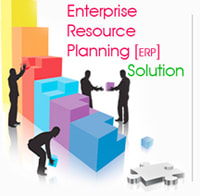 ERP software is embracing a new world of consumerized technology focused on the employees as enterprise' resource experts. Exploring how ERP, your enterprise-first approach, can make use of social, mobile and cloud technologies to give employees the freedom, flexibility and confidence they require will drive company productivity. In a smaller view, what does Enterprise Software Systems, ERP, offer your department or you and your job? ERP, designed and implemented properly, can be defined as simplifying productivity by integrating tasks which otherwise are disparate business events. ERP’s mission is to deliver the best decision support, in a timely manner, with meaningful and relevant content in the most usable forms possible.
A case in point is a local business growing 20% year over year. Yet profits are waning to pre-growth levels; volume is up, profits are down. Enterprise information (big data) and decision support are not necessarily going hand in hand. Most of what an ERP system can do for a company requires extensive training/knowledge, open mindedness and new competencies for sustained success. Looking at successful ERP implementations over the past decade, in a variety of industries, findings clearly indicate three key factors enabled their success.
Bringing your opinions clearly to the discussion table in an open frank forum of cost versus business value. (When an engineer at Litton, I was tasked with developing my department “wish list” budget for new equipment required on upcoming projects. On this list was an oscilloscope costing nearly $20,000. I felt like I was stealing the company’s money by requesting such an expensive piece of equipment be purchased. My manager said; “I don’t want you thinking this is your personal budget, this is a business and we must have what it will take to be successful.” That day, I learned to separate my personal beliefs about spending versus the company needs.) But above all, getting to the destination goal effectively and reliably was of utmost importance. ERP software, like a business-muscle, requires exercising to be strong and add value to the organization. Like a body of processes and functions, these business-muscles are keys to enterprise core strengths, extended capabilities and endurance. If we only exercise the arms and not the legs, we will be lopsided in our knowledge leaving core competencies weakened. Thinking of ERP as a range-of-motion (ROM) machine, we can only get what the weakest muscle is capable of delivering or risk breakdowns. Strength is relative and knowledge becomes subjective across an enterprise where training is reduced to save money in the hope that learning as we go will suffice. Sometimes a business coach or trainer will help focus the enterprise on building their strengths ensuring lasting success. SYSPRO is an example of ERP software designed to deliver the best enterprise results. A tailorable and configurable system, like SYSPRO, is at its best when combined with learned, well trained staff with deep knowledge to support the company’s long term objectives embedded into the business plan. ERP potential capabilities may lie dormant and inadequately resourced if underutilized and under-trained. For example: Enterprise problem solving utilizing an ERP re-discovery process can help your organization understand how business needs and process issues can be better managed by bringing your team’s focus on their business challenges. utilizing ERP capabilities and unused capacity: Let’s take a quick look at engineering change control as a quick case study. Your company has a CAD design software system and all product changes are updated in the CAD system. The CAD system is an independent platform and currently does not integrate with your ERP software. Your ERP software has add-on systems you can add at two levels.
In Summary: Simplifying Your Enterprise is part art and science. Going to the end game, if your systems are not interoperable, there are risks with missing links or components, operations or mismatched customer orders. If the components in the Bill of Material (BOM) do not match the engineering version ordered, your buyers are making purchasing errors and inventory cannot be used and cash-flow is questionable. If your enterprise systems are out of sync, your results too are unpredictable as are company profits. Newsletter subscription options:
0 Comments
Your comment will be posted after it is approved.
Leave a Reply. |
AuthorWrite something about yourself. No need to be fancy, just an overview. Archives
September 2022
Categories |

 RSS Feed
RSS Feed